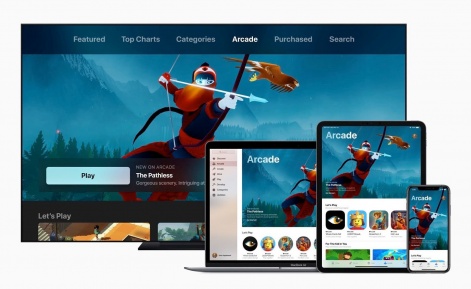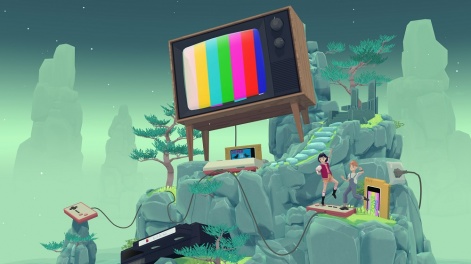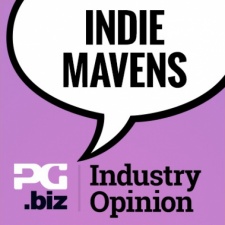From in-app purchases and advertising to premium, choosing the right business model can be a difficult choice for indies on mobile.
While it's possible for indies to make money from premium - depending on the level of expectation - the market has long since moved to free-to-play, a space dominated by the big developers and publishers. The ability to run live ops and spend big on user acquisition are big factors in increasing the barriers for successful indies on the platform.
So, if there is a best route to take for indies to get the greatest possible chance of success, what is it?
Well, like any of these questions, it’s best to get the answers right from the source. We reached out to our Indie Mavens for their input on this crucial conundrum:
What monetisation models best benefit independent studios in the current mobile market?
To be blunt, paid. There are indies (including some of the Mavens) who’ve done stellar jobs of turning free-to-play into something that’s profitable for them, which is always great. In the longer-term, bigger picture kind of thing, ultimately indie games rely on players valuing what they’re playing enough to spend money on it rather than on something else.
Free-to-play is a fun way for players to get everything they (think they) want for nothing. However, it also leads to them not really valuing what they’re playing and in the long run that makes it harder and harder for indie games and small studio games to make money.
See the recent furore about Epic doing their $10 off feature on its storefront and how that annoyed its indie game clients for instance. If it’s not valued, players will wait for it to be on sale or wait for the inevitable free-to-play knockoff.
Paid can take on a few forms. Premium (i.e. you pay for individual games) is definitely a niche and a struggle now. Free ‘demo’, as well as IAP unlock, is a little nicer on the players but is now permanently stained by the “IAP is evil” stigma.

Subscription services (Apple Arcade, Xbox Game Pass, GameClub) are looking like the future if the investment by the service and returns to the developers are worthwhile.
Players are getting all their games without having to stop and pay for them individually (and possibly being able to play them for free on a trial basis before subscribing to the service), but they’re actually paying for the games as a whole with their subscription, so they still have value.
The downside of the subscription options though is the barrier to entry for indies. For Apple Arcade you’ve pretty much got to have written the game on your own funds before it can be considered and Xbox Game Pass is mostly for titles that have already been released.
GameClub looks like being a good one for iOS games at least, although the focus at the moment is on older games. So basically, the models where the players understand they’re paying for something that has value to them.
I think Aaron makes a good point about the Epic Store, and I have previously shared many thoughts on subscription models, but I disagree with Aaron's comment: "Free-to-play is a fun way for players to get everything they (think they) want for nothing, but it also leads to them not really valuing what they’re playing and in the long run that makes it harder and harder for indie games and small studio games to make money".
I think the goal of free-to-play design is to add enough value for players so they find it worth spending money inside the game. For me, free-to-play is not about devaluing games but moving the buying decision to be inside the game, whereas premium development leaves the purchasing decision outside the game. Both have purchasing decisions that we as developers must consider how to overcome, but the two models tackle it differently. Arguably neither is better suited to an indie.
F2P is not about devaluing games but moving the buying decision to be inside the game, whereas premium leaves the purchasing decision outside the game.Simon Joslin
With our two most recent titles - The Gardens Between (premium) and Train Conductor World (free-to-play) - we have seen the differences directly and had success with both. Most of the resources for each game were spent on solving very tricky game design and development problems.
But where they differ is that with our premium title we put vastly more effort into its presentation and marketing materials, including multiple major announcements with custom trailers and collateral, and travelling to more than 10 international festivals around the world at great expense.
Whereas with our free-to-play we put close to zero effort in marketing, and instead focused on how it can be fun for players both paying and not, and how purchasing inside the game affects and integrates with the game design.
I would have previously argued that it is free-to-play that allows me to focus more on my core strength (game design) and less emphasis on my tertiary skills of marketing and promotion. But after having made The Gardens Between, I've realised that my game design focus is simply more compatible with free-to-play than for some other designers.
My comfort zone in design is the more systematic aspects, whereas some designers are more skilled in the game design aspects of the story, characters and worlds, which I feel tends to not be as important in free-to-play, but works great for many types of premium games.
I suppose as a practice we simply haven't found friendly ways to monetise story-driven games, yet? Obviously, we were able to give significantly more space to the artistic side of making The Gardens Between than if it was a free-to-play game. Perhaps as the model evolves that might change? Neither I believe to be a better model for indies at this time, but rather each has its own strengths, weaknesses and opportunities.

One caveat I'd add is that we intentionally avoid any kind of user acquisition in free-to-play, nor expect to require it for a healthy game, because we presume it's a steep slope towards having to maximise revenue per user so much that it overpowers our emphasis on good user-friendly game design.
So, in order to survive in this market, we make simpler games, expect not to make as much, and rely on our players to spread the game via word of mouth. In the future, I hope to use more social features and perhaps multiplayer to help spread the game without requiring UA.
Sure, I’d like to clarify my point that Simon (rightly) takes issue with. I’d agree with Simon that the goal of free-to-play design is giving players something valuable so that they’d want to spend money in the game.
However, whatever the free-to-play model, the initial draw for players is that the game is “FREE”. I put that in all caps because that’s what the player sees. They don’t see “this game has value that is worth paying for” whether it’s IAP or ad-funded. They see “FREE”.
So, while short or medium-term an indie can do very well on free-to-play, to answer the main question: any sort of model that reinforces the idea in players’ minds that all content should be free and has no value is non-beneficial to both indie studios and players in the long run.

Daniel Menard is the CEO of Canada-based studio Double Stallion Games
I agree with Aaron that the premium model is beneficial to indies and hopefully it won't decline completely, with the expectation from players that games should be free. The barrier to entry for free-to-play is absolutely massive, as you need deep pockets to cover the massive upfront cost, the game and the time it takes to tune your retention/monetisation engine.
My top gaming experiences of the last decade all come from premium titles where the designers can focus on delivering gameplay that is meaningful instead of creating a cleverly disguised store/loot box machine.
Free lowers the barrier to entry for players and that can make sense for large multiplayer games (Fortnite, League of legends, etcetera), but I think it contributes to a devaluing of games in general for players and that's not good for the industry in the long run.
There are new business models starting up that I'm excited about, like Game Pass. Hopefully, this will shake things up a bit. Admittedly I'm getting older now and slowly losing touch with the teenagers and college students with little money, hoping to score some entertainment.
I hope that the general population of players keeps valuing games enough to take a chance and pay upfront for an experience that focuses the designer on delivering gameplay. Without that, I think we'd be losing something culturally valuable.
If we’re talking about the current market today, I think they’re both very tough. I too sincerely hope that premium gets easier with more subscription packages searching for quality premium content.
For example, Apple Arcade is a no brainer for families and if it continues to fund creative, unique exploratory experiences - as I imagine it is - then this is good for our medium, creative community and individuals who want to get paid.
Unfortunately, those packages aren’t going to fund everyone, and the air has largely been sucked out the mobile premium market otherwise, so there’s not much room to move either way you go.
























